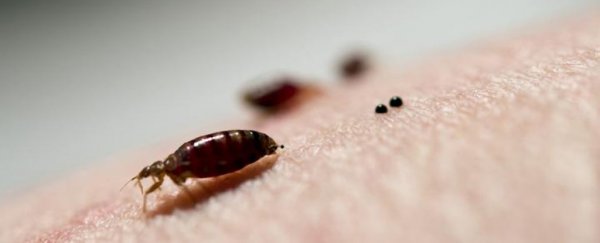Scientists have discovered that popular chemicals used to eradicate the common bed bug (Cimex lectularius) may have become virtually ineffective, as the insects have developed extremely high levels of resistance to the poisons.
According to the researchers, their study is the first to demonstrate that overuse of certain insecticides has fuelled bed bugs' resistance mechanisms, and it could mean that we need to develop new ways of controlling or eliminating the pests.
"While we all want a powerful tool to fight bed bug infestations, what we are using as a chemical intervention is not working as effectively it was designed and, in turn, people are spending a lot of money on products that aren't working," said entomologist Troy Anderson from Virginia Tech.
To examine whether a commonly used class of insecticides called neonicotinoids (aka neonics) were doing their job, the researchers compared bed bugs that had been exposed to the chemicals with a colony of isolated insects that hadn't.
The team collected exposed bed bugs from houses in two US cities – Cincinnati and Michigan – and sourced the unexposed insects from a laboratory colony that had been kept in isolation from before the insecticide was used (some 30 years ago).
They found dramatically different levels of resistance to neonicotinoids depending on the history of exposure. It took just 0.3 nanograms of a neonicotinoid called acetamiprid to kill 50 percent of bed bugs from the isolated colony, but required more than 10,000 nanograms to kill 50 percent of the insects from Michigan and Cincinnati.
For another chemical called imidacloprid, 2.3 nanograms killed 50 percent of the isolated bed bugs, but it took 1,064 nanograms and 365 nanograms to kill half the Michigan and Cincinnati populations, respectively.
All up, the exposed bugs taken from homes demonstrated between 163 and 33,333 times the resistance to four types of neonicotinoids. A third population of bed bugs that hadn't been exposed to neonicotinoids since 2008 showed moderate levels of resistance in the tests.
According to the researchers, when bed bugs are exposed to insecticides, they produce detoxifying enzymes to counter the poisons, which can clearly become quite powerful in negating the effects of neonicotinoids.
The findings, reported in the Journal of Medical Entomology, don't mean that bugs all over the US or the rest of the world would have developed equal levels of resistance to those extracted from Michigan and Cincinnati, but they do suggest that insects with exposure to insecticides are getting better at resisting them – and in some cases, by a dramatic degree.
"We need to emphasise that we need to use different tools – we can't depend totally on chemicals. We need to incorporate other alternatives," Alvaro Romero, one of the researchers from New Mexico State University, told Matt McGrath at the BBC.
Romero says non-chemical solutions currently being looked at by the pest control industry include heat, vapour, and encasement methods of killing bed bugs, but he also acknowledges there's no quick fix to the resistance phenomenon they've discovered.
"It's a very complex problem and we are going to have bed bugs for many years because of this problem with insecticides," Romero told the BBC, "and then there is a social context that makes eradication and control very difficult."
